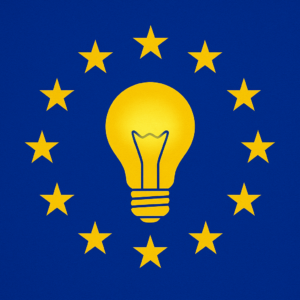Headquarters: Svetog Nauma 7, 11000
Office address: Đorđa Vajferta 13, 11000
Phone:: +381 11 4529 323

Before COVID-19 arrived in Serbia and its consequences became clear for all to see, Serbia’s highest government officials seemed more prone to joke about it than to prepare for it. President Aleksandar Vučić notably quipped that alcohol prevents the virus, while Foreign Minister Ivica Dacić made light of the situation on occasion, as well as presented conspiracy theories on the origin of the virus. After a slow start, however, Serbia introduced a number of measures and declared a state of emergency to tackle the spread of the disease, that, though possibly disproportionately strict, has so far managed to avoid a massive spike in cases unlike in Italy or the United States.
The United States, however, seems not to have grown up. Despite having the largest number of cases of the disease in the world, government in the United States from the top down seems unprepared to take the virus on, with fake news, publicity stunts, useless posturing, and meddling in actual efforts to stop the spread the seeming preferred courses of action. The United States did little to prepare for COVID-19 despite the months between its emergence in China and arrival in the United States. A shortage of tests and a limited response in the first days of the virus allowed it to spread throughout the country. Even today, little cohesive strategy on the virus seems to exist, with statements and actions from President Donald Trump, for instance, sometimes contradicting themselves. A number of states are already being pushed to reopen despite the continued community spread of the disease – it seems, therefore, that the immaturity shown by government has and will lead to massive loss of life.
In fact, a disturbing tendency towards negative action seems to be increasingly apparent: what measures did exist to combat the virus are being rolled back before they should be if the health of citizens is a concern. Trump and his allies identify as being against “big government”, and many of his supporters view stay-at-home orders and other anti-coronavirus measures as intrusions into their lives and rights. Some of these supporters have protested measures against the virus in the past weeks, supported by conservative groups with political ties, and arguing that they are an outsized response to the severity of the disease. Protesters are demanding that states relent on restrictive policies and that life should return to normal, even with the health risks entailed. They have even gone so far as to block hospitals, potentially putting victims of the disease at risk.
These protests, supported by many of Trump’s “base”, his most fanatical supporters, have had a degree of influence at the top. Even though the disease continues to spread, Trump himself has pushed for the reopening of the country at first on Easter, April 12th, and then May 1st, far ahead of any reasonable timeline. He has also exhibited some very problematic behaviour in the wake of the pandemic, raising Chinese conspiracy claims, arguing for treating the disease with “bleach injections”, and delaying the issuance of relief cheques by demanding his signature be printed on them (in what appears to be a clear attempt at buying support) to name just a few. Finally, Trump’s Justice Department has threatened to intervene in states which it deems are acting “unconstitutionally”, potentially severely limiting them from implementing measures such as stay-at-home ordnances.
Conspiracies and chaos seem to abound while real solutions are few and far between, generally implemented at the state level. Lacking clear and effective direction from the top, state governments are forced to devise and implement their own measures, which can vary tremendously. As borders between states are rarely if ever controlled, state-level policy thus has little potential to quickly harness the disease. Some states nevertheless are attempting to form coalitions to work against the disease, arguably representing the most serious opposition to Trump’s policy. Congress as well has worked on providing relief to help the overburdened healthcare sector as well as American citizens yet has taken little preventative action so far. Nevertheless, federal funding for pandemic control and medical responses in a wider sense has been in decline for more than a decade, with hundreds of millions of dollars less available today than in the early 2000s. Trump as well has done his share to limit response resources.
In many countries, governments have “grown up” a bit; in Serbia for instance, jokes about the disease eventually turned to government response – even if said response has been imposed through a somewhat authoritarian approach based on strict curfews. Instead of pushing for quarantine and social distancing measures, government in the United States, at the top and in many states, is misleading citizens and pushing to reopen, despite the continued spread of the disease. Nevertheless, the situation is still far from hopeful – while more people disapprove than approve of Trump’s policy (as is normally the case), nearly 85% of his “base” Republicans approve of his handling of the pandemic so far. As placating supporters seems to be the most important goal of the Republican-controlled government, it seems that even in the face of already over 50,000 deaths many of the country’s most important decision-makers are unwilling to implement policy essential to stopping the disease. Ultimately, it seems that if things continue at the current pace, COVID-19 will have a massive impact on the United States for the long haul, with a potentially very different country by elections in November. It remains to be seen whether Trump’s antics will continue to be tolerated by the American electorate.
The author is Miles Lewis, former CEP intern.